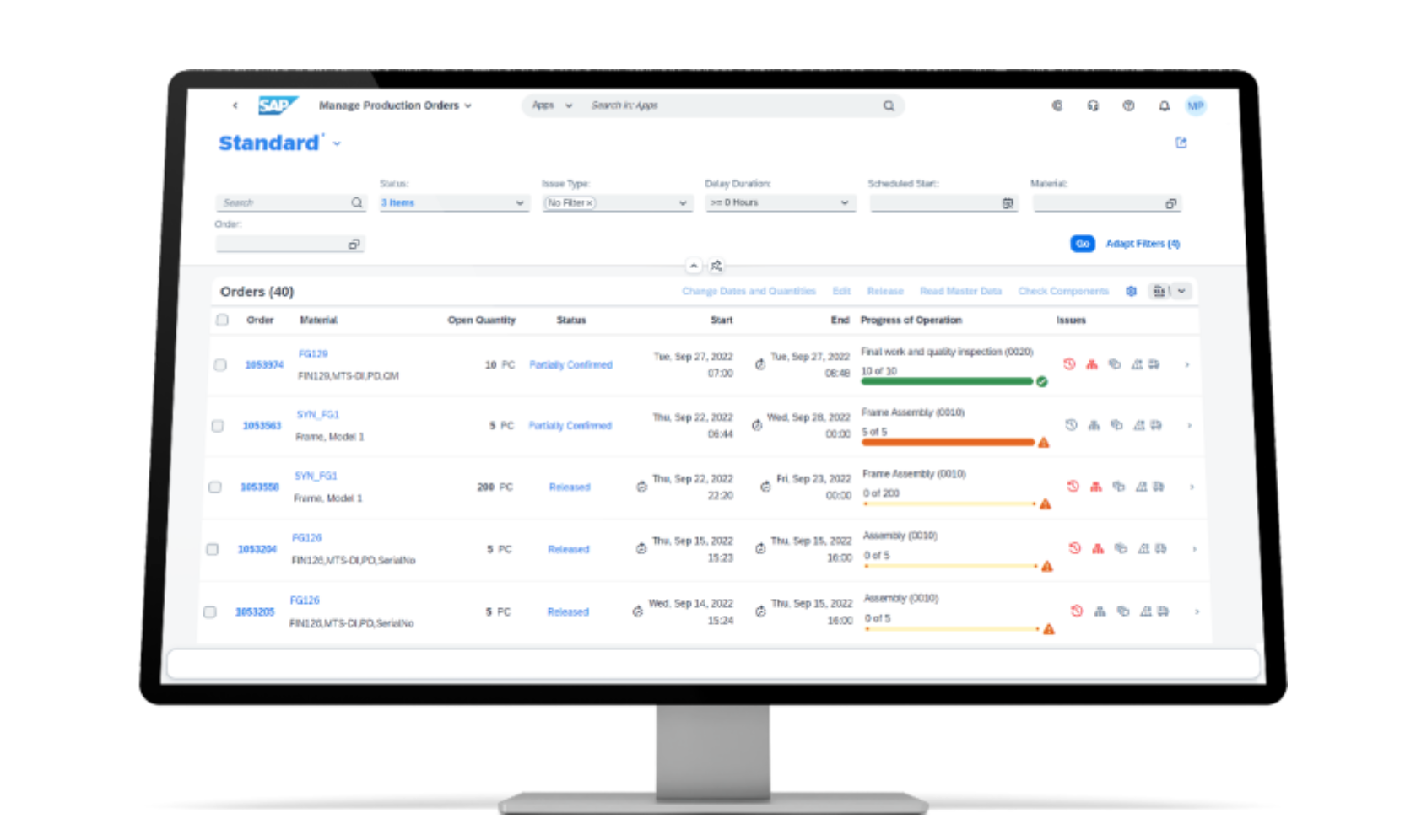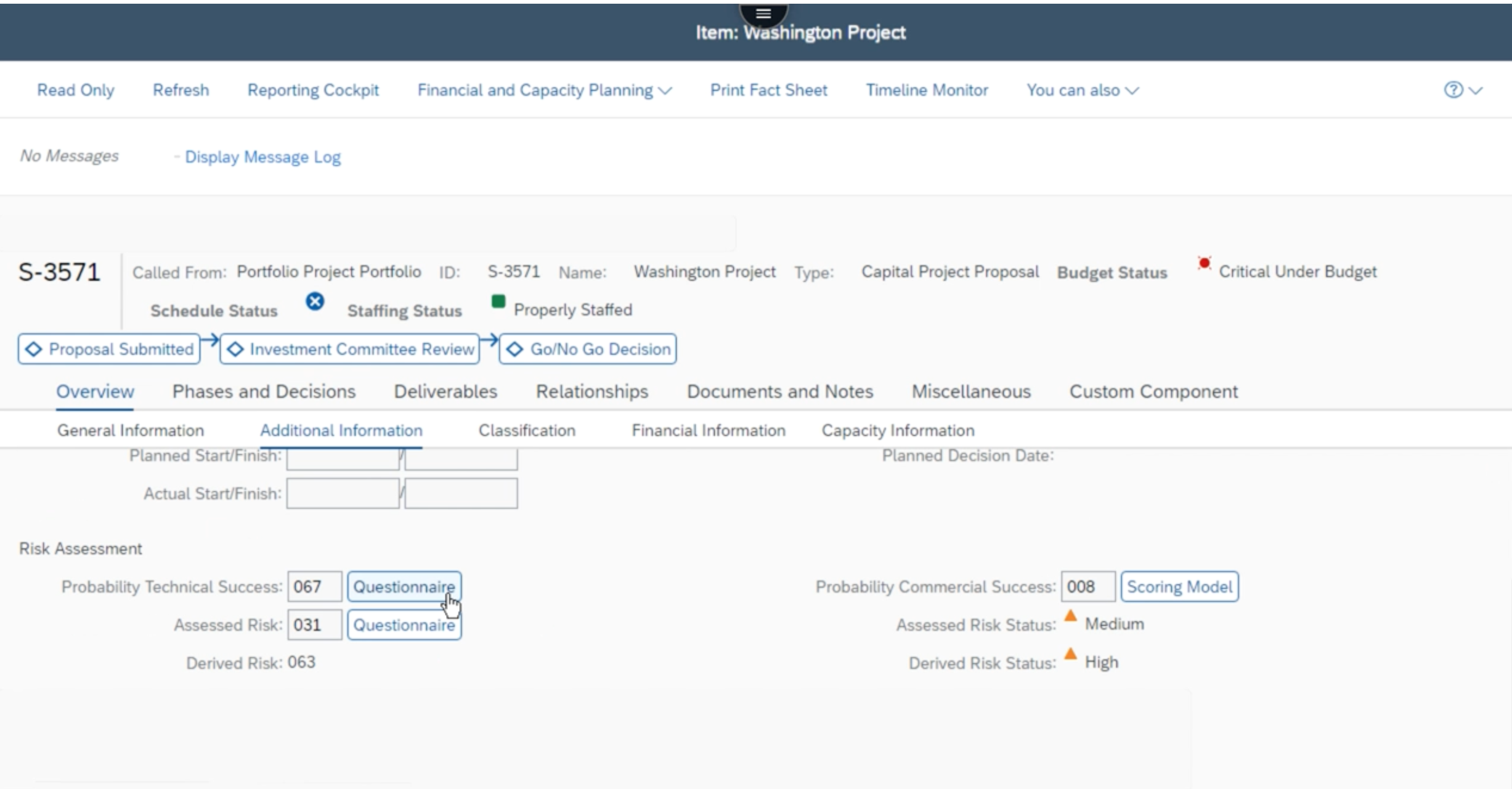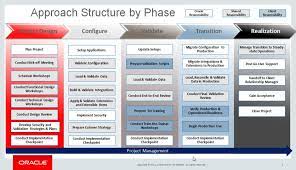SAP and Oracle are two of the largest ERP vendors on the planet and their two flagship ERP systems, SAP S/4 HANA and Oracle ERP Cloud
1. Pricing and costs
2. User Experience
3. Functionality
4. Implementation
5. Industry Fit
6. History
Pricing & Costs
SAP S/4HANA Pricing
Deployment Options: SAP S/4HANA offers both on-premise and cloud (public and private) options. The choice between these can significantly impact cost.
License Model: For the on-premise version, SAP generally charges a one-time license fee based on the number of users and the level of access they require (e.g., full access vs. read-only). Cloud versions operate on a subscription model, priced per user per month, with different tiers based on functionality.
Implementation and Customization Costs: These can be substantial, as SAP S/4HANA is often tailored to fit complex, global enterprises with unique processes. Costs include consulting fees, system integration, and potential modifications.
Maintenance and Support Fees: For on-premise deployments, SAP charges an annual maintenance fee, typically a percentage of the software license fee. Cloud subscriptions usually include support and maintenance in the monthly fee.

Oracle Fusion ERP Pricing
Deployment Options: Oracle Fusion ERP, also known as Oracle ERP Cloud, is primarily offered as a cloud-based solution, emphasizing flexibility and scalability.
Subscription Model: Pricing is generally based on a subscription model, with costs per user per month. Oracle may offer different packages or modules (e.g., financials, procurement, project management), each with its own pricing.
Implementation and Customization Costs: While Oracle Fusion ERP is designed for configurability and scalability, significant customization or integration with other systems can increase initial implementation costs. Oracle also has a network of partners that provide implementation services.
Additional Costs: Beyond the subscription fee, organizations might incur costs for additional cloud storage, advanced security features, or premium support options.
User Experience
The user experience (UX) of an enterprise resource planning (ERP) system plays a crucial role in its adoption and effectiveness. SAP S/4HANA and Oracle Cloud ERP (Oracle Fusion ERP) both prioritize UX to ensure their systems are not only powerful but also accessible and intuitive for users. Here’s a comparison of the user experience offered by these two platforms:
SAP S/4HANA User Experience
- Fiori UX: SAP S/4HANA leverages the SAP Fiori UX design, which is a major departure from the traditional SAP GUI. Fiori is designed to be simple, modern, and role-based, ensuring that users have access to the tools and information they need in a straightforward manner. It emphasizes a responsive design that works across devices, including desktops, tablets, and smartphones.

- Personalization: Fiori allows for a high degree of personalization. Users can customize their home screens with the apps they use most frequently, and the system can deliver personalized insights and actions based on the user’s role and preferences.
- Embedded Analytics: One of the key strengths of SAP S/4HANA is its real-time analytics capabilities. Fiori provides users with embedded analytics directly within their workflows, allowing for informed decision-making without the need to switch between applications or use external tools.
- Learning Curve: Transitioning from the traditional SAP GUI to Fiori can require a significant adjustment for users. However, SAP provides extensive resources and training to support this transition, and many users find the Fiori UX to be a major improvement in terms of usability and efficiency.

Oracle Cloud ERP User Experience
- Modern and Intuitive Interface: Oracle Cloud ERP offers a modern, web-based interface that is designed to be intuitive and easy to navigate. The UI is clean and user-friendly, with a focus on simplifying complex processes and making information easily accessible.
- Personalization and Customization: Users can personalize their dashboards and work areas with the information and tools they use most often. Oracle also offers tools for businesses to customize the UX to better fit their specific processes and needs.
- Collaboration and Social Integration: Oracle Cloud ERP incorporates social and collaborative features directly within the ERP system, facilitating communication and collaboration among team members. This integration helps streamline workflows and improve productivity.
- Mobile Experience: Oracle provides a mobile app and responsive design for its Cloud ERP system, ensuring that users can access the system and perform tasks from anywhere, on any device. The mobile experience is designed to be consistent with the desktop experience, offering flexibility and convenience to users.
Functionality & Modules
Both SAP S/4HANA and Oracle Cloud ERP are comprehensive solutions designed to manage complex business operations. They offer a wide range of functionalities across various modules such as finance, human capital management (HCM), and supply chain management. Below, we delve into more detail about the core functionality and modules of each platform:
SAP S/4HANA Functionality
Finance
- Financial Planning and Analysis: Advanced planning, budgeting, and forecasting tools.
- Accounting and Financial Close: Streamlines financial operations including general ledger, accounts payable/receivable, and fixed assets.
- Treasury and Risk Management: Manages financial risk, investments, and operations to optimize liquidity.
- Compliance and Tax Management: Ensures compliance with international accounting standards and tax regulations.

Human Capital Management (Integration with SAP SuccessFactors)
- Core HR and Payroll: Manages employee information, payroll, and legal reporting.
- Talent Management: Supports recruiting, onboarding, performance, compensation management, and learning activities.
- Employee Experience Management: Tools for feedback and engagement to improve employee experiences.
Supply Chain
- Supply Chain Planning: Integrated planning tools for demand, supply, and production planning.
- Manufacturing: Supports both process and discrete manufacturing with detailed scheduling and execution.
- Procurement: Streamlines procurement processes with supplier management and contract management.
- Logistics and Warehouse Management: Manages transportation, warehouse operations, and track and trace of goods.
Other Key Modules
- Sales and Distribution: Manages sales order processing, pricing, billing, and revenue recognition.
- Customer Service: Supports service order management, warranty, and returns.
- Product Lifecycle Management: Manages product development, information, and lifecycle from inception to end of life.
Oracle Cloud ERP
Finance
- Financials: Comprehensive tools for financial management, reporting, and analytics.
- Advanced Financial Controls: Utilizes AI for real-time monitoring of financial transactions to prevent fraud and errors.
- Expense Management: Simplifies expense report processing and provides insights into spending patterns.
- Risk Management and Compliance: Helps ensure adherence to financial policies and regulations.
Human Capital Management (Part of Oracle Cloud HCM)
- Global HR: Centralizes employee data globally with workforce modeling and HR help desk.
- Talent Management: Manages the talent lifecycle, including recruitment, learning, and performance.
- Workforce Management: Time tracking, labor rules, and absence management.
- Payroll: Comprehensive global payroll solutions.
Supply Chain & Manufacturing
- Supply Chain Planning: Offers demand management, supply planning, and sales and operations planning.
- Procurement: Procurement contracts, purchasing, and supplier qualification management.
- Inventory and Cost Management: Manages inventory levels, costing, and product transaction processing.
- Manufacturing: Supports various manufacturing processes, including discrete, process, and mixed-mode manufacturing.
Other Key Modules
- Enterprise Performance Management (EPM): Budgeting, planning, and forecasting tools.
- Project Management: Project planning, execution, and financial management capabilities.
- Risk Management: Advanced risk detection and management tools.
Implementation
The implementation of an ERP system is a critical and complex process that significantly impacts an organization's operational efficiency, data management, and decision-making capabilities. Both SAP S/4HANA and Oracle Cloud ERP are leading solutions in the market, but they differ in their approach, methodology, and challenges associated with their implementation. Here's a comparison of implementing SAP S/4HANA versus Oracle Cloud ERP:
SAP S/4HANA Implementation
Approach and Methodology
- SAP S/4HANA implementations follow the SAP Activate methodology, which combines best practices, guided configuration, and agile project management principles. SAP Activate is structured into phases: Discover, Prepare, Explore, Realize, Deploy, and Run, designed to streamline the transition to S/4HANA, whether it's a new installation, system conversion, or landscape transformation.
- The methodology emphasizes the importance of simplifying processes, driving innovation, and delivering projects in iterative cycles that allow for adjustments based on feedback.

Challenges
- Data Migration: For existing SAP customers, migrating to S/4HANA can be challenging, especially if moving from a significantly customized legacy system. Ensuring data integrity and minimizing downtime are critical considerations.
- Customization and Complexity: Organizations with highly customized SAP environments may face complexities adapting those customizations to the new S/4HANA architecture, which can extend timelines and increase costs.
- Skills Gap: The transition to S/4HANA may require upskilling or reskilling employees to manage and operate the new system effectively, especially given the emphasis on Fiori UI and advanced analytics.
Duration and Cost
- The implementation time can vary widely, from several months to a few years, depending on the organization's size, complexity, and the scope of the implementation. Costs are similarly variable and can be significant, including software licensing, consulting services, training, and potential downtime.
Oracle Cloud ERP Implementation
Approach and Methodology
- Oracle Cloud ERP implementations leverage the Oracle Unified Method (OUM), which focuses on cloud and hybrid deployments. OUM provides a framework that supports the entire enterprise IT lifecycle, including cloud application services.
- Oracle also emphasizes a cloud-first approach, which can simplify some aspects of the implementation process by reducing the need for on-premise infrastructure setup and maintenance.

Challenges
- Integration: For organizations using a mix of cloud and on-premise systems or those with extensive third-party applications, integrating with Oracle Cloud ERP can be complex and requires careful planning.
- Change Management: As with any ERP implementation, managing organizational change is vital. Users need to adapt to new workflows and interfaces, which can be a significant undertaking.
- Configuration vs. Customization: Oracle Cloud ERP encourages configuration over customization to maintain system integrity and upgradeability. This approach can limit flexibility for businesses with unique process requirements.
Duration and Cost
- Oracle Cloud ERP projects may have a shorter initial implementation phase compared to SAP S/4HANA, particularly because of the cloud-based nature of the platform, which reduces the need for physical infrastructure setup. However, the total time to achieve full operational efficiency can still extend over several months or more.
- Costs include subscription fees, implementation services, training, and change management efforts. The subscription model can make expenses more predictable over time but still requires a significant upfront investment in implementation.
Industry Fit
SAP S/4HANA and Oracle Fusion ERP (Oracle Cloud ERP) are both leading enterprise resource planning (ERP) solutions that serve a wide range of industries. Their capabilities can significantly enhance operational efficiency, provide real-time insights, and support strategic decision-making across different sectors. Here’s a comparison of how SAP S/4HANA and Oracle Fusion ERP stack up in five prominent industries:
- SAP S/4HANA offers robust support for manufacturing operations, including production planning, shop floor management, quality management, and maintenance. It's particularly strong in handling complex manufacturing processes and supply chain logistics, making it well-suited for industries like automotive, high-tech, and industrial machinery and components.
- Oracle Fusion ERP provides comprehensive manufacturing and supply chain management features, including product lifecycle management, supply chain planning, procurement, and inventory management. Its cloud-native solution is beneficial for manufacturers focusing on agility and innovation, such as those in consumer electronics and food and beverage industries.
Retail
- SAP S/4HANA excels in the retail industry by offering capabilities that cover merchandise management, omnichannel commerce, and customer engagement. Its strength in analytics and data processing supports large retailers in managing vast amounts of transaction data and in making data-driven decisions.
- Oracle Fusion ERP, combined with Oracle Retail solutions, delivers a complete suite of applications designed for the retail sector, from financials and supply chain to customer experience. Oracle’s strong cloud infrastructure supports retailers in achieving scalability, flexibility, and innovation in a rapidly evolving market landscape.
Financial Services
- SAP S/4HANA is highly regarded in the financial services industry for its comprehensive financial management capabilities, including accounting, treasury, risk management, and compliance. Its powerful analytics and reporting tools are crucial for financial institutions needing to manage risk and comply with regulations efficiently.
- Oracle Fusion ERP offers strong functionalities for financial services, with advanced financials, risk management, and compliance features. Oracle's focus on cloud and data analytics provides financial institutions with the tools to streamline operations, enhance customer insights, and support growth.
- SAP S/4HANA supports the healthcare industry by offering solutions for patient care and billing, procurement, and human resources. Its ability to integrate with SAP Health for research and patient management makes it a comprehensive choice for hospitals and healthcare systems looking for in-depth operational control and data analysis.
- Oracle Fusion ERP, along with Oracle's healthcare-specific solutions, provides a robust platform for financial management, supply chain operations, and human capital management in the healthcare sector. Oracle's cloud solutions facilitate secure data management and scalability for healthcare providers, research institutions, and insurance companies.
Public Sector
- SAP S/4HANA delivers tailored solutions for the public sector, including capabilities for finance, procurement, and grant management. It is designed to help public organizations manage resources efficiently, enhance transparency, and improve citizen services.
- Oracle Fusion ERP caters to the public sector with strong financial management, procurement, and project management functionalities. Its cloud-based system supports government agencies, educational institutions, and non-profit organizations in modernizing their operations and improving service delivery.
History
SAP S/4HANA History
- Early Beginnings: SAP, founded in 1972, has been a pioneer in the ERP market with its SAP R/2 and SAP R/3 systems, the latter of which revolutionized the way businesses managed their operations across different functions.
- Evolution to S/4HANA: In February 2015, SAP launched SAP S/4HANA, a next-generation ERP suite designed to leverage the SAP HANA in-memory database. This was a significant shift, introducing a platform capable of processing large volumes of data in real-time, supporting advanced analytics, and offering a simplified data model.
- Innovation and Expansion: SAP S/4HANA represented a major overhaul of SAP’s ERP platform, focusing on cloud-first strategies, user experience with SAP Fiori, and enhanced capabilities across various business processes. SAP has continuously updated S/4HANA, adding new functionalities, industry-specific solutions, and integration capabilities.

Oracle Cloud ERP History
- Oracle’s ERP Journey: Oracle, established in 1977, entered the ERP market through the development of its own applications and through strategic acquisitions, including PeopleSoft, JD Edwards, and Siebel Systems, which expanded its portfolio in the ERP, CRM, and SCM markets.
- Transition to the Cloud: Oracle Fusion ERP, part of Oracle Cloud Applications, was officially launched in the early 2010s. Oracle Fusion represented a new approach, built from the ground up for the cloud, integrating best practices from Oracle’s acquisitions and new technologies.
- Cloud-First Focus: Oracle has aggressively pursued a cloud-first strategy, positioning Oracle Cloud ERP at the center of its applications suite. The platform has been continually enhanced with new features, technologies like AI and machine learning, and a strong emphasis on user experience and scalability.
Key Differences in Their Evolution
- Technological Foundation: SAP S/4HANA is built on the unique capabilities of the SAP HANA in-memory database, emphasizing speed, real-time analytics, and a simplified architecture. Oracle Cloud ERP is developed as a native cloud application, focusing on scalability, flexibility, and integration within Oracle’s cloud ecosystem.
- Market Approach: SAP’s transition to S/4HANA included a significant push for existing customers to migrate from SAP ECC, aiming to consolidate its user base on the modern platform. Oracle’s approach with Cloud ERP has been more about capturing the broader shift towards cloud computing, targeting both existing Oracle users and new customers with a comprehensive cloud suite.
- Innovation and User Experience: Both SAP and Oracle have emphasized innovation and user experience in their ERP solutions. SAP Fiori and Oracle’s modern user interface reflect their commitment to making ERP systems more accessible, engaging, and productive for users.